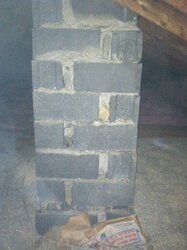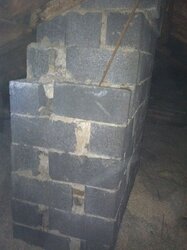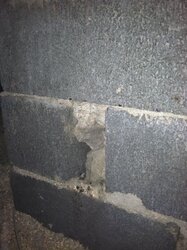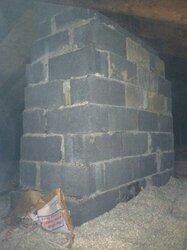hello, i've had my jotul 550 for one and a half seasons now and have been having issues with heat escaping into the attic, melting snow and creating ice dams.
my house is a rancher and the fireplace is in the middle of the house. There is a 6-8' section of the chimney running up through the attic that is constructed of 8" masonry block. there are several gaps and spaces in the masonry wall where i believe heat is escaping to the attic.
when my insert was installed, they had to chip out the clay liner in the chimney in order to fit the insulated liner.
can i just fill these gaps with sprayfoam and wrap the whole thing in insulation? its my understanding that an insulated liner will contain any flue fires that may occur but...what do you think?
pics are attached.
my house is a rancher and the fireplace is in the middle of the house. There is a 6-8' section of the chimney running up through the attic that is constructed of 8" masonry block. there are several gaps and spaces in the masonry wall where i believe heat is escaping to the attic.
when my insert was installed, they had to chip out the clay liner in the chimney in order to fit the insulated liner.
can i just fill these gaps with sprayfoam and wrap the whole thing in insulation? its my understanding that an insulated liner will contain any flue fires that may occur but...what do you think?
pics are attached.





